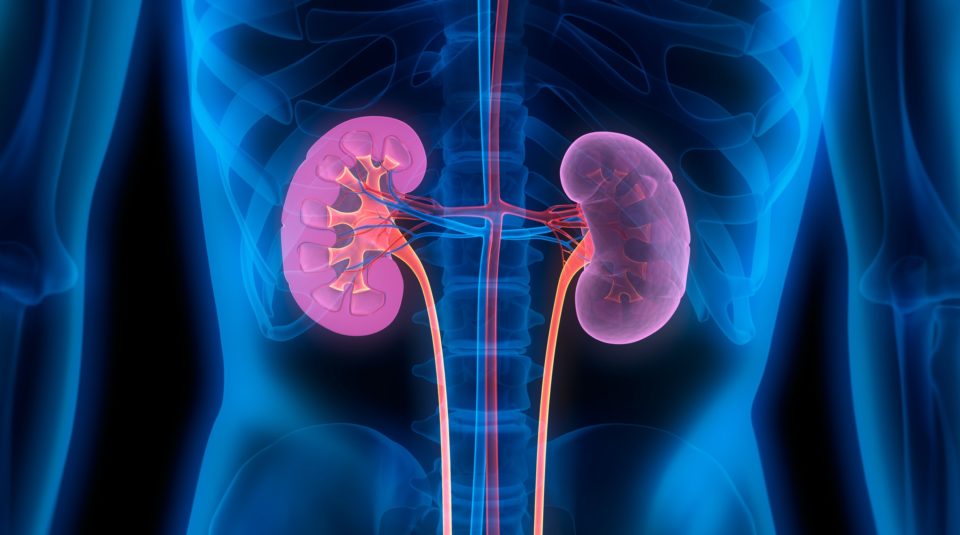
Pulmonary hypertension (PH) affects up to 10% of individuals more than 65 years of age and is more common among those with chronic kidney disease (CKD), due in part to the high prevalence of heart failure, volume overload, and vascular calcification in that population. Results of previous studies have found a prevalence of PH of 20% to 15% at various stages of CKD.
Even after accounting for underlying cardiovascular and other comorbidities, the mortality risk in patients with PH is amplified in the presence of CKD. Associations of elevated pulmonary artery pressure and PH with adverse cardiovascular events and mortality have also been consistently noted in CKD. Most of those prior studies of PH in CKD included relatively younger patients; there are few data available on the associations between PH and outcomes among elderly patients with CKD.
Sankar D. Navaneethan, MD, MS, MPH, and colleagues conducted a retrospective, observational study with a matched cohort design to examine the associations of PH with morality, kidney failure, and hospitalization (both cardiovascular and non-cardiovascular) in a cohort of Medicare beneficiaries with diagnosed CKD. Results were reported in the American Journal of Kidney Diseases [2021;78(5):700-708].
The primary outcome measure of interest was time to all-cause mortality as reported in the Centers for Medicare & Medicaid Services files. Secondary outcomes were time to kidney failure (determined by the US Renal Data System from the date of initiation of dialysis or kidney transplantation), and hospitalizations extracted from Medicare claims. The researchers also categorized hospitalizations into cardiovascular and non-cardiovascular hospitalizations (data identified from primary International Classification of Diseases (ICD), Ninth Edition and ICD-Tenth Edition diagnosis codes at discharge).
The association between PH and mortality was assessed using Cox proportional hazards models, adjusting for age, sex, race, and comorbidities. The association between PH and kidney failure was assessed with death as a competing event in Fine-Gray models. The relationship between PH and all-cause, cardiovascular, and non-cardiovascular hospitalizations using a negative binomial model.
Following application of inclusion and exclusion criteria, the study cohort included 30,052 patients with PH and CKD and 150,260 CKD stage-matched patients without diagnosed PH. Participants were 67 to 95 years of age.
Patients in the group with PH were older (median, 80.7 years vs 79.9 years) and more likely to be female (57.8% vs 51.7%) than those in the group without PH. More than one-third of the study population had CKD stage 3; CKD stage was unknown for 44.3% of the study population. In the PH group, the proportion of participants with coronary artery disease, heart failure, obesity, interstitial lung disease, and chronic obstructive pulmonary disease was higher than that in the non-PH group. Of those with Medicare Part D data available, 86% of those in the PH group were prescribed diuretics compared with 60% of those in the non-PH group.
During year 1 of follow-up, years 2 to 3, and 4 to 5, in both unadjusted and adjusted models, there were associations between PH and higher mortality. The highest hazard was seen in follow-up year 1 (hazard ratio [HR], 2.87; 95% confidence interval [CI], 2.79-2.95). In the two later follow-up periods, the association was attenuated but remained statistically significant: HR, 1.56; 95% CI, 1.51-1.61 in years 2 to 3, and HR, 1.47; 95% CI, 1.40-1.53 in years 4 to 5.
At the end of year 1, the rate of kidney failure occurrence was 35.5 per 1000 person-years in the group with PH compared with 12.8 per 1000 person-years in the group without PH. In both unadjusted and adjusted models, the risk for kidney failure was higher in patients with PH (adjusted HR, 2.18; 95% CI, 1.98-2.39). In the time periods after follow-up year 1, the rate of kidney failure was lower in those with PH: 16.1 per 1000 person-years in years 2 to 3 and 14.2 per 1000 person-years in years 4 to 5.
The risk of kidney failure among those with PH was significantly higher in years 2 to 3 but not 4 to 5 in multivariable models. Higher rates of acute kidney injury (AKI) events and AKI requiring dialysis support within 30 to 90 days of the AKI event were seen among those in the PH group compared with those without PH.
There was an association between the presence of PH and a higher rate of all-cause, cardiovascular, and non-cardiovascular hospitalization, particularly in the follow-up year 1. The rate between PH and cause-specific hospitalizations was higher for cardiovascular hospitalization than for non-cardiovascular hospitalization(4.61 vs 2.62).
The association of PH with mortality or kidney failure in follow-up year 1 was not modified by sex, race, and the presence of diabetes. The association of PH with hospitalization was modified by sex and diabetes in follow-up year 1; the association was stronger among men than among women and stronger among those without diabetes than among those with diabetes. In follow-up years 2 to 3, there was a stronger association of PH with mortality among men than among women and the association of PH with kidney failure was stronger among those with diabetes than those without diabetes. In follow-up years 4 to 5, the association between PH and mortality was stronger among those without diabetes than among those with diabetes.
Reliance on billing codes and lack of data on echocardiogram or right heart catheterization were cited as limitations to the study.
In summary, the authors said, “The presence of PH was associated with increased risks of mortality, kidney failure, and cardiovascular and non-cardiovascular hospitalization among Medicare beneficiaries previously diagnosed with CKD. Further studies are warranted to explain the mechanisms underpinning the observed associations and to test the potential utility of current and novel therapeutic agents to treat PH in those with CKD.”
Takeaway Points
- Pulmonary hypertension (PH) is highly prevalent among patients with chronic kidney disease (CKD). Researchers reported results of a study among Medicare beneficiaries with CKD ≥67 years of age to examine associations between PH and mortality, kidney failure, and hospitalization.
- At the end of year 1 of follow-up, years 2 to 3, and years 4 to 5, there was an association between PH and higher mortality in both unadjusted and adjusted models.
- Those with PH also had a higher rate of all-cause, cardiovascular, and non-cardiovascular hospitalizations and higher rate of kidney failure than did those without PH.







 © 2025 Mashup Media, LLC, a Formedics Property. All Rights Reserved.
© 2025 Mashup Media, LLC, a Formedics Property. All Rights Reserved.